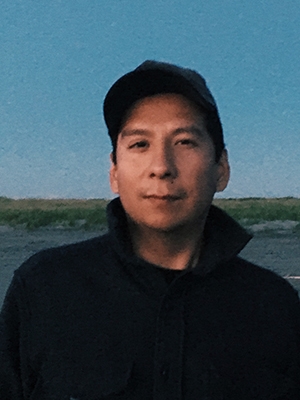Sky Hopinka

Photo: courtesy of the artist
Sky Hopinka
Ho-Chunk Nation/Pechanga Band of Luiseño Indians born 1984
Level 2
NGV International
View on map
PROJECT
Sky Hopinka is a filmmaker, video artist and photographer who centres Indigenous perspectives. Through the interplay of imagery, sound and text, Hopinka has created a unique cinematic language that pushes artistic boundaries by combining Indigenous histories and contemporary experiences. His work transitions between documentary-style representations and abstract visuals. Hopinka presents three films: Mnemonics of shape and reason, 2021; Lore, 2019; and Fainting spells, 2018.
Hopinka is a member of the Ho-Chunk Nation and the Pechanga Band of Luiseño Indians; he has roots in Ferndale, Washington, and has spent significant periods in Palm Springs and Riverside, California, as well as Portland, Oregon and Milwaukee, Wisconsin. For Hopinka, video allows a fluid reflection on spirituality – one that continually allows him to explore the relationships between land, sky, sea, myth, place and self.
The fusion of Indigenous stories with language, poetry, performance and video lends something profound to Hopinka’s work. His work speaks directly to Indigenous audiences while also offering space for non-Native people to acknowledge, through film, the eclipsing and erasure of culture that continues by way of the colonial project. Hopinka’s work is both a meditation and a political act – a way of reclaiming the camera, a weapon historically used against First Peoples.
ABOUT
Sky Hopinka is a Native American visual artist and filmmaker who is a member of the Ho-Chunk Nation and a descendant of the Pechanga Band of Luiseño people. Hopinka was born and raised in Ferndale, Washington, and spent several years in Palm Springs and Riverside, California; Portland, Oregon; and Milwaukee, Wisconsin. In Portland he studied and taught chinuk wawa, a language indigenous to the Lower Columbia River Basin. His video, photography and text-based work centres around personal positions of Indigenous homeland and landscape; designs of language as containers of culture expressed through personal and non-fiction forms of media.